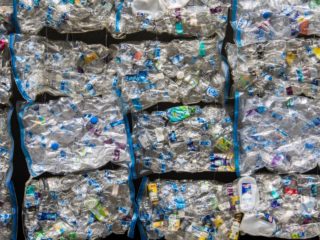Is all your diligent plastic recycling effective in tackling our ever-expanding waste crisis? I’m skeptical, and even more so since my recent “field trip” to an incinerator. Yes, you read that right. I’ll get to why I went, but first let me explain why recycling – plastic recycling, in particular – can be a diversionary tactic preventing us from finding real solutions to our waste crisis.
No Good Deed …
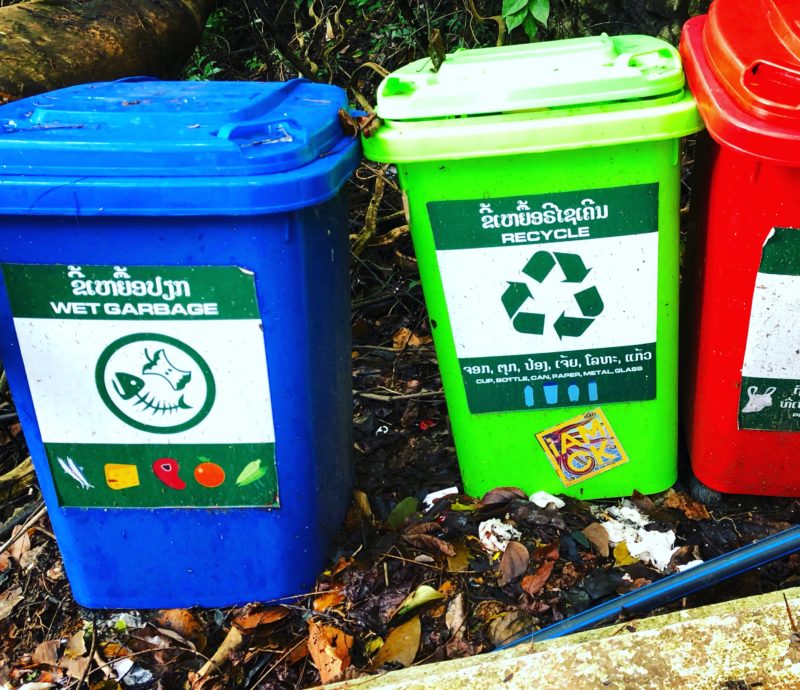
You want to do the right thing and protect the environment by properly disposing of your waste. You clean and separate plastics and place them in the recycling bin, ready for pickup. Or, if you’re out and about, you look for available plastic recycling bins to deposit empty plastic items.
All of these actions – you assume – help divert unwanted items from the landfill so that they can be recycled into useful products. It justifies that new purchase, right?
Sadly, all of these recycling efforts have little effect in reducing waste. The reality is that recycling is a far less effective way to solve our garbage problem than other strategies. (For those strategies, read on.)
Who’s Behind the Push for Plastic Recycling?
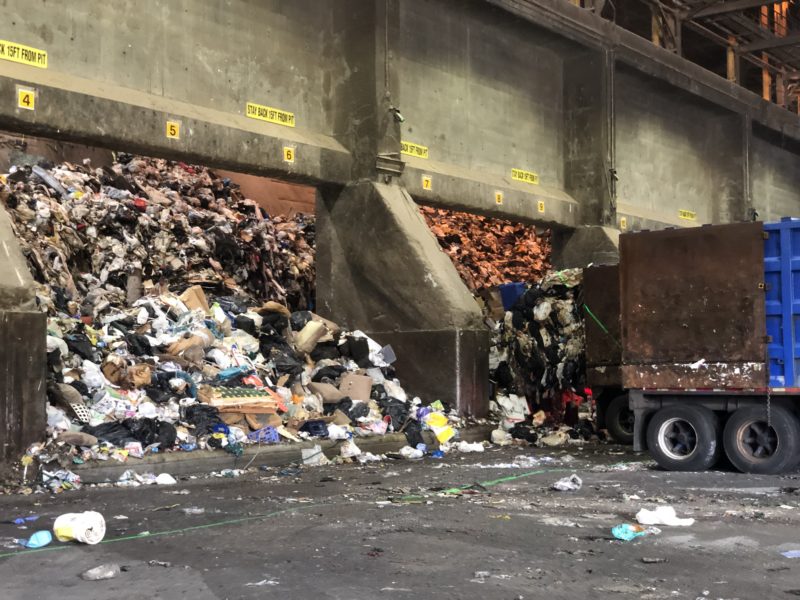
The answer to this question might surprise you: It’s the plastics industry. “Why?” you might (or, should) ask. Well, plastic recycling is a clever, yet green-washed, ploy to maintain production by perpetuating a myth that all this plastic is destroyed. The sad truth is that it’s not.
This brings me to the incinerator trip. A few fellow city council and sustainability group members visited our county waste-to-energy facility to learn how the county disposes of its waste. What was most eye-opening – and frankly, shocking – was to gaze across the vast cavern of trash and see that most of it was plastic. I was already aware of the bleak plastic recycling statistics, but it was jarring to have the physical proof staring right at me.
What’s the Real Problem?
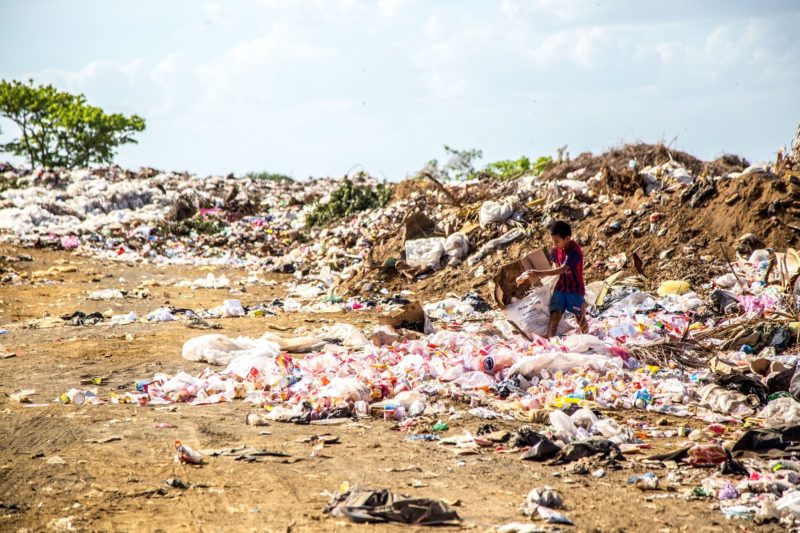
What’s the real problem we’re grappling with? It’s true, we must figure out a way to deal with all that garbage currently in existence, but the real problem is the ever-increasing amount of STUFF, particularly single-use plastic stuff, that’s produced, consumed briefly, and then added to existing colossal piles of trash. Recycling can’t solve this problem.
So all that plastic you put in the recycling bin, thinking it’s getting recycled? Think again. According to a recent report, only two types, with recycling codes #1 and #2 (generally, rigid plastics, such as bottles and jugs), are truly recyclable. Many recycling facilities accept only those two types of plastics due to insufficient market demand and processing capabilities. And even if the facility accepts the plastic, it doesn’t mean it’s all actually recycled. It’s frequently sent to landfills or incinerators if buyers aren’t available.
In fact, the 2015 recycling rate for all materials in the U.S. was just over 34%, and for plastics, it was a paltry 9%! That means that over 90% is sent to the landfill, incinerated or, worst, pollutes our environment forever.
To solve the problem, we need to stop it at its source: production. So, resist the red herring put out by the plastic industry, tempting you to think that plastic recycling is the answer to our waste problem. Recycling is just one (very small) part of the solution to our waste crisis and not the most effective one.
How Can You Make a Difference?
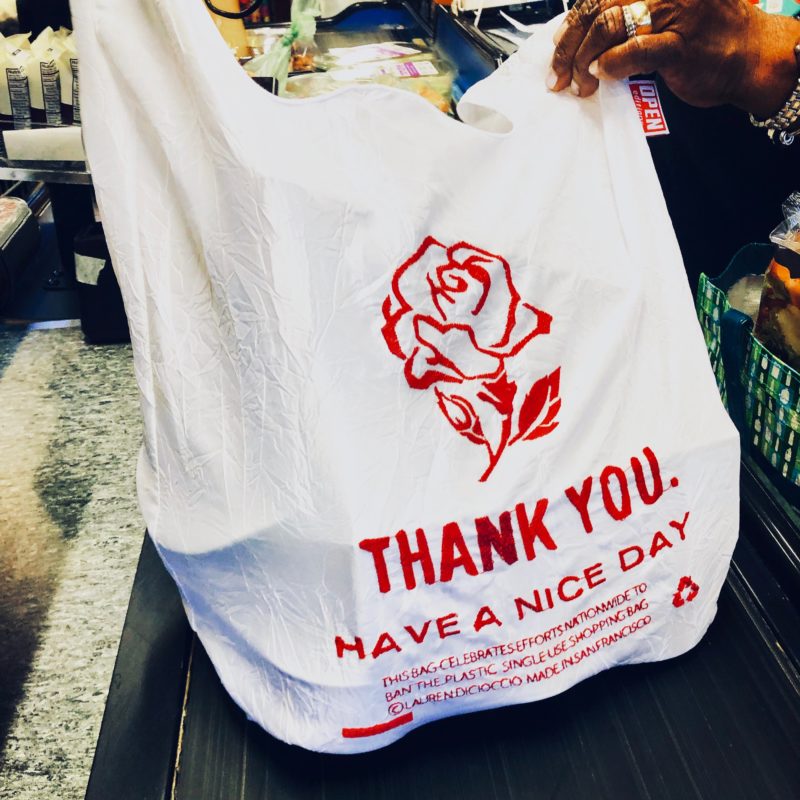
Learn the Facts to Understand the Core Problem
Where does your recycling go? Your garbage? Start with your town website for information, but do a little bit of background digging to uncover the facts about where your waste ends up. You’ll be surprised at what you discover.
Reduce and Reuse
It’s easy to be tempted to buy the latest, shiny new product. Before you make the purchase, take stock of what you have. Do you really need it? And do you already own items that you could reuse or re-purpose? I bet you’ll find that you own something similar or that you don’t even need it.
Say No to Single-Use Plastics
Limit your purchase of single-use plastics to those very rare times when you absolutely need them. So, say no to plastic straws that can’t be recycled and litter our oceans and waterways. Say no to plastic bags, when a reusable bag will do the job (and a much better job, at that). And, say no to the dizzying array of single-use plastic products that are used once, fleetingly, but remain forever.
The more we refuse to purchase unnecessary products and reuse what we have, the more we’ll help reduce the buildup of waste. Most importantly, we’ll send a strong message to corporations that we don’t want these waste-generating products.
Become an Activist!
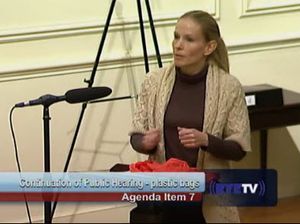
Join a group that’s actively calling for corporations to reduce or eliminate unnecessary plastic production. National organizations that have made plastic waste reduction a priority include Greenpeace, 5 Gyres, and Surfrider Foundation. No local chapters or relevant organizations near you? Then start your own initiative!
Thanks to the efforts of individuals, activists, and environmental groups calling for change, corporations (for example, Marriott, Ball Corp., Hasbro, and Coca Cola) are taking notice and are starting to make changes with how they package, serve, or deliver their products. In addition, package-free and zero waste stores are beginning to pop up around the globe.
Demand Legislative Change
Another way to make your voice heard is to support and vote for candidates that have a strong environmental record and support effective waste reduction legislation, such as plastic bag bans and plastic straws reduction laws. See Green That Life’s Vote for the Planet Guide for detailed information on how to vote and who to vote for.
Continue to Recycle, But Do it Right
Just to be clear, I’m not saying we should trash recycling. It serves a useful purpose, but in its current state, it’s not getting the job done to reduce waste. One way to improve and increase recycling is for all of us to recycle right.






